It was a late afternoon conversation on the back patio. Dot, my wife, and I were talking about major events that have occurred in our almost 70 years of marriage, and that’s a lot of ground to cover. “Do you recall a time like this when it seems the world is coming apart: COVID-19 shutdowns, financial distress, the Ukraine war, the Middle East, and constant economic upheavals, and now a huge financial market sell-off”? she asked.
I admitted that I could not recall anything quite like the last 15 years.
Dot responded with a challenge: “If you were made economics czar in January and had full sway to change federal policies, what would you do to make things better? Taxes? Regulation? What?”
I suggested two things that I would do as economics czar. First, the right kind of nothing — a year-long ban on any changes in taxes, spending, regulation, tariffs and monetary policy, and during that pause, a call for a long conversation with the American people about their hopes, dreams and future promise.
Now, some background.
There’s no doubt about it, since the 2008 Great Recession, the U.S. economy has been roiled to look more like the Great American Scream Machine than the Great American Bread Machine. The Federal Reserve is still trying to reduce inflation from the high nines while working to avoid another recession. Meanwhile, presidential candidates from both parties are calling for more tariffs, higher taxes for some and lower for others, and more or different kinds of regulation.
Just to put some dimensions on the roller coaster turbulence experienced by the American people since 2007, consider this. The unemployment rate stood at 4.7% in October 2007. It rose to 10.0% in October 2009 during the recession, just two years later. The rate then plummeted as the economy became flush with stimulus money and hit 3.5% in February 2020. Then, with COVID shutdowns, the unemployment rate jumped to 14.8% in April 2020, the largest one-month increase since 1939. It then fell to 3.4% in April 2023, after the Fed continued to cut interest rates, but rose to 4.3% in July 2024 following a Fed policy reversal. We are almost back where we started in 2007. Whew!
To get a handle on government intervention during all this, the Brookings Institution’s Hutchins Center produces a Fiscal Impact Measure that estimates how much local, state and federal spending adds to GDP quarterly growth. The measure’s four-quarter moving average stood at minus 0.25 percentage points in 2007’s third quarter. At the time, there was no meaningful government stimulus. After efforts to cushion the effects of the 2008 recession, the measure jumped to 2.62 percentage points in 2009’s fourth quarter. In 2018’s second quarter, the measure rose to 3.85 percentage points, and in 2021’s first quarter, 5.23 percentage points. Brookings predicts that the Impact Measure will register minus 0.08% in this year’s fourth quarter. This is close to where the ride started in 2007. Finally, real GDP growth was hitting 2.41% in 2007’s third quarter. The most recent estimate shows 3.1% for 2024’s second quarter.
So, with this background in mind and memories of the rough roller coaster ride still intact, let’s have a year-long policy pause and give the economy a chance to find itself, to regain balance and move forward. Of course, we will have to respond to external shocks, should they occur, but let’s not add any of our own making.
And while catching our economic breath, let’s have a national conversation with hearings in major cities speaking to the fundamental question: What are our hopes and dreams, and what is our future promise?
Bruce Yandle is a Distinguished Adjunct Fellow for the Mercatus Center at George Mason University.





